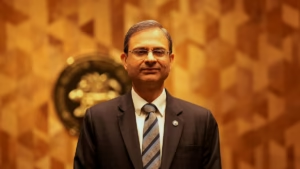
Diesel demand growth in India has slowed to its lowest level since the pandemic, reflecting a combination of economic factors and a shift toward cleaner energy alternatives. According to provisional data from the Petroleum Planning and Analysis Cell (PPAC) under the Ministry of Oil, diesel consumption rose by only 2% to 91.4 million tonnes in the fiscal year 2024-25. This marks a significant deceleration compared to the 4.3% growth in the previous fiscal year and the robust 12.1% growth in 2022-23.
Diesel, which accounts for approximately 40% of India’s oil consumption, is primarily used to power trucks, farm machinery, and heavy-duty logistics. However, its growth trajectory has been impacted by slower economic expansion and the increasing adoption of electric vehicles (EVs). Industry officials have noted that while diesel still fuels around three-fourths of India’s transport sector, its dominance is being eroded by the rapid rollout of EVs, particularly in commercial fleets.
Urban areas like Delhi and Mumbai are aggressively deploying electric buses, while electric auto-rickshaws have become the norm in many tier-2 and tier-3 towns. Logistics companies, including major e-commerce players like Amazon, Flipkart, and BigBasket, are transitioning their delivery vehicles from diesel to electric, further reducing diesel demand.
In contrast, petrol consumption grew by 7.5% to 40 million tonnes, and LPG demand rose by 5.6% to 31.32 million tonnes during the same period. Jet fuel consumption also saw a nearly 9% increase, reflecting a resurgence in air travel. However, industrial fuels presented a mixed picture, with declines in naphtha and bitumen usage.
Overall, petroleum product consumption in India for 2024-25 stood at 239.171 million tonnes, marking the slowest growth in a decade, excluding the pandemic-hit years of 2019-20 and 2020-21. Looking ahead, PPAC has projected a 5.7% increase in total oil consumption for the current fiscal year, with diesel demand expected to rise by 3%.


